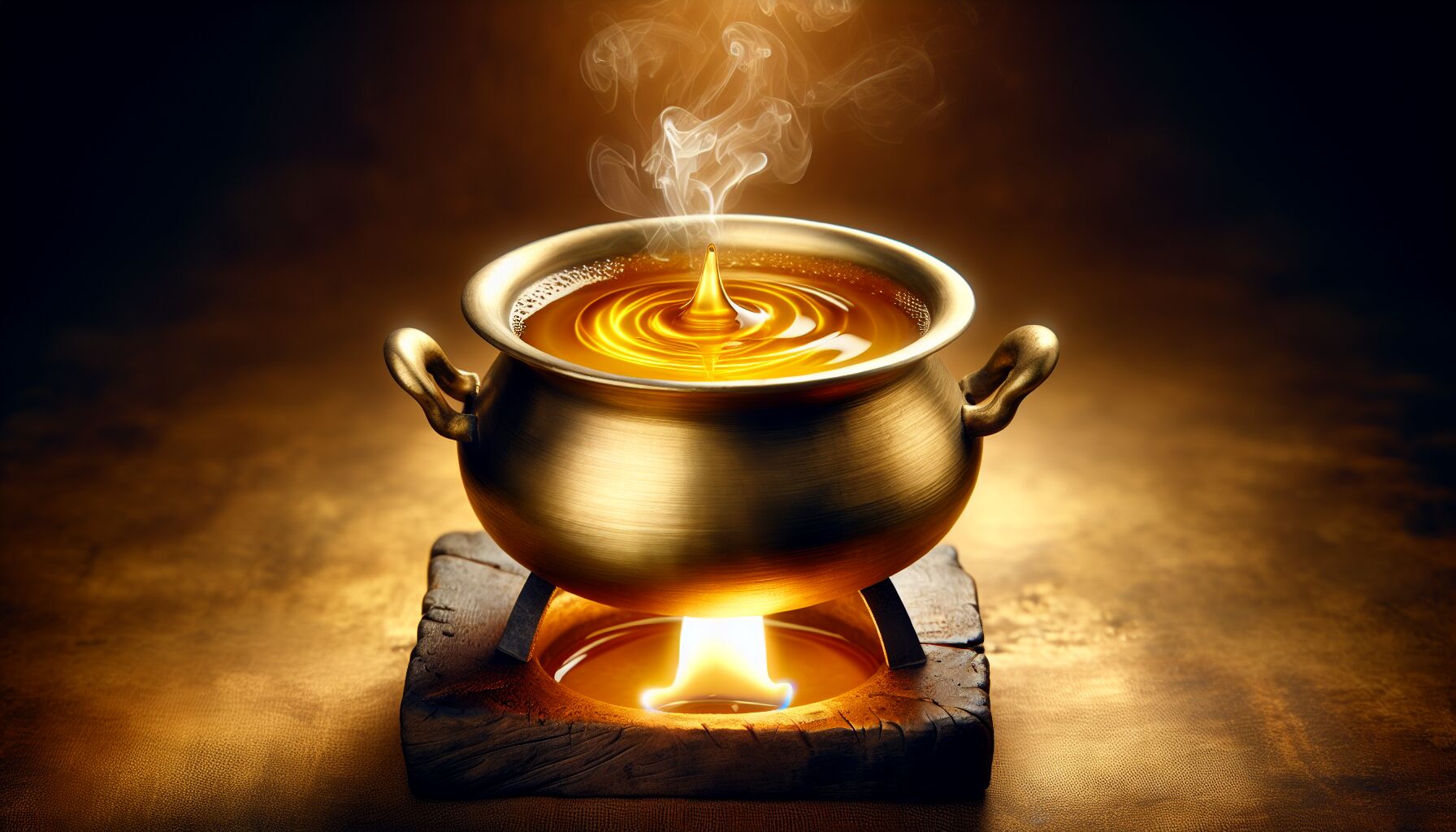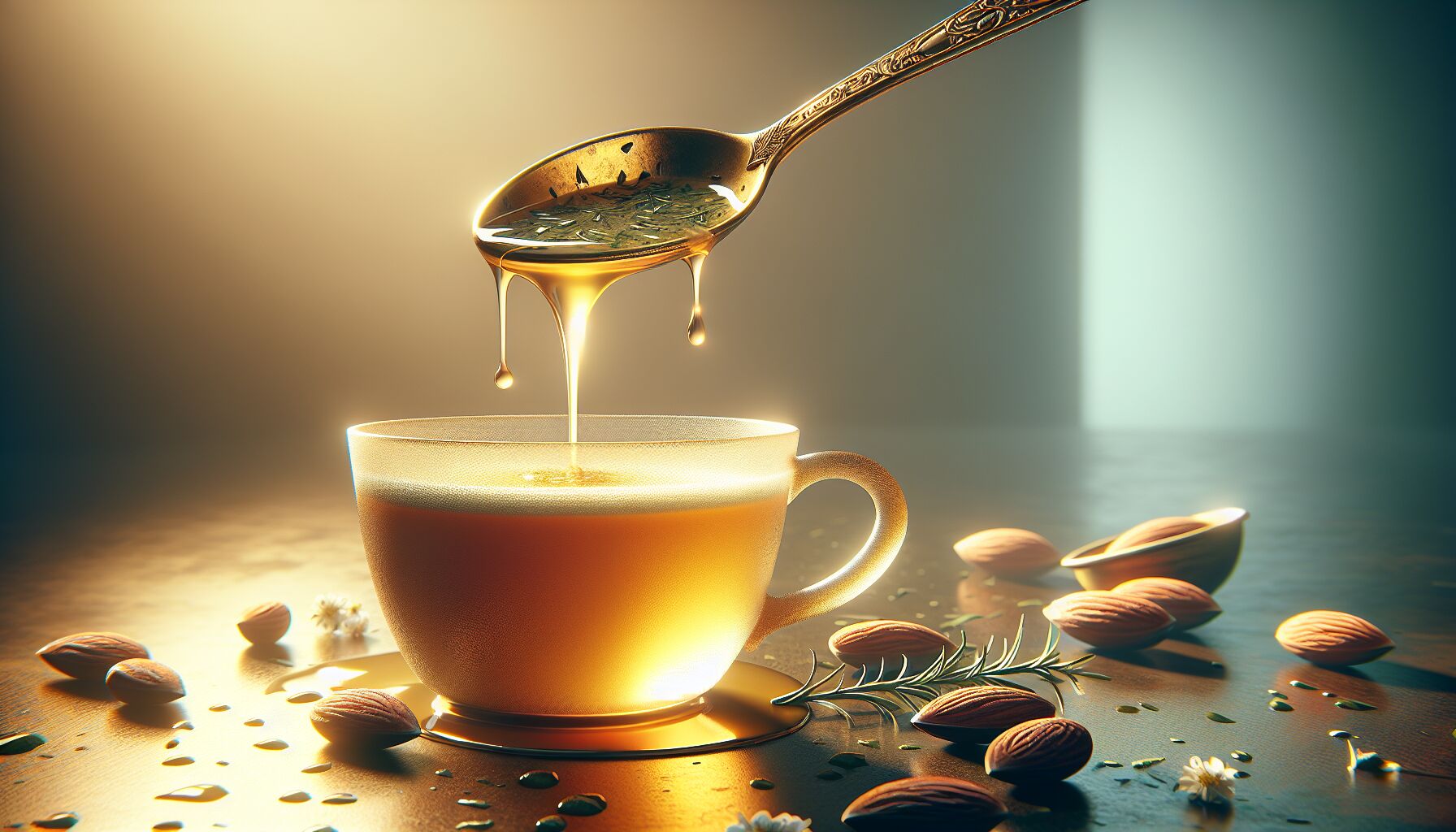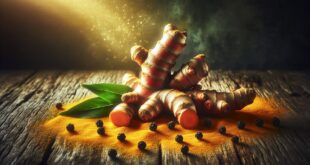 At first glance, ghee might just look like a golden block of fat—a cooking staple in South Asian kitchens. But in the context of Ayurvedic nutrition, it’s something far more nuanced. It’s food, yes, but also medicine. Fuel. Carrier. Healer. And unlike mass-manufactured oils that often lack soul or structure, real ghee—made from simmering cultured butter over a gentle flame—is both potent and deeply nourishing. Think of it as slow medicine, crafted with intention.
At first glance, ghee might just look like a golden block of fat—a cooking staple in South Asian kitchens. But in the context of Ayurvedic nutrition, it’s something far more nuanced. It’s food, yes, but also medicine. Fuel. Carrier. Healer. And unlike mass-manufactured oils that often lack soul or structure, real ghee—made from simmering cultured butter over a gentle flame—is both potent and deeply nourishing. Think of it as slow medicine, crafted with intention.
To understand why ghee is so revered in herbal healing, it helps to break down its composition. Ghee is rich in fat-soluble vitamins A, D, E, and K. These aren’t just alphabet soup—these are critical messengers in the body. Vitamin A repair tissues and supports vision. Vitamin D regulates calcium absorption, deeply linked to immune resilience. And Vitamin K works subtly but powerfully, helping blood clot properly and supporting bone health. Since these are all fat-soluble, they need a fatty carrier to move through the system—and ghee does that job beautifully.
But it’s not only about vitamins. Ghee contains conjugated linoleic acid (CLA), with some emerging studies connecting CLA to heart strength, reduced body fat, and stabilized inflammation. More interestingly, ghee is rich in butyrate—one of those short-chain fatty acids that microbial researchers can barely stop talking about. Butyrate fuels the cells of your colon and influences gene expression in the gut microbiome. Translation? Healthier digestion, sharper immunity, and more peace in the belly.
Ghee also has an extremely high smoke point—around 450°F—which is kind of rare for fats that are this nutrient-dense. That means when you sauté your turmeric root or warm your cumin seeds, you’re not breaking down the fat’s integrity or forming harmful free radicals. It’s heat-stable, buttery, and holds up under pressure—qualities sorely needed in more than just cooking.
Now let’s zoom out a bit. In Ayurveda, ghee is classified as sattvic, meaning it promotes clarity, balance, and mental harmony. It lubricates joints, moistens tissues, and—through a concept called snehana—encourages softness and emotional connectivity. The Sanskrit root “sneha” means both “oil” and “love.” That’s not a linguistic coincidence. It’s a statement of purpose.
“Let food be thy medicine and medicine be thy food.” — Hippocrates
Unlike industrial seed oils or margarine imitations, true ghee made from grass-fed cow’s milk contains no casein or lactose when properly clarified. That makes it incredibly agreeable for most people with dairy sensitivities—not to be confused with full-blown dairy allergies. And it stores without refrigeration if kept dry and clean, making it a smart staple in self-reliant households or off-grid setups.
Here’s something often overlooked: ghee is not only nourishing on its own—it’s also a trusted carrier in herbal healing. This is what Ayurveda calls an Anupana—a medium that helps deliver herbs deeper into the tissues. Turmeric, ashwagandha, brahmi—all of these herbs ‘ride’ into the body more effectively when stirred into warm ghee. It’s kind of like sliding a message inside a reliable envelope. Without the ghee, the medicine may never reach its destination.
You know what people often miss when they talk about fat? They assume that all fats are the same just because they look alike on a label. But ghee holds memory—of the pasture, the grass, the season, even the chanting or calm with which it’s made. Factory oil can’t do that. Ghee, when treated with reverence, literally carries intention.
If you’re tapping into older ways of living—without over-glorifying the past—then making fresh ghee at home becomes less a health hack and more a ritual. Heat slowly. Skim carefully. Listen to the simmer. That’s when ghee becomes more than a food—it becomes a companion.
“You learn a lot about a culture by how it values its fats.” — Unknown
So whether you’re spreading it onto warm sourdough, spooning it into morning porridge, or blending it with triphala at bedtime, you’re not just eating. You’re participating in something far older than nutritional science—a quiet kind of wisdom that lives in the bones, breath, and belly.
Common herbal infusions used in Ayurveda
If you’ve ever wandered through the spice markets of Kerala or opened an old Ayurvedic handbook passed down through a family, you’ll notice this: herbs aren’t just flavor or folklore—they’re foundations. And in Ayurvedic nutrition, they’re chosen with care: each plant offering a temperature, a taste, and a direction of movement in the body. When combined with ghee, these herbs become even more bioavailable, slipping past digestion’s tougher gates and entering deep tissue with grace. It’s herbal healing with a North Star.
But let’s get tangible. You don’t need to know Sanskrit or own a bronze mortar and pestle to work with these medicinal allies. Just get familiar with a few of the herbs that have stood the test of centuries—not only in India but quietly woven into Western herbals too.
- Turmeric (Curcuma longa) – Warming, bitter, pungent
Turmeric isn’t a trend—it’s a cornerstone. Known as Haridra in Sanskrit, this root is famous for its deep golden color and anti-inflammatory gifts. In Ayurveda, it’s classified as heating and slightly drying, making it perfect for kapha imbalances (think sluggish digestion, congestion, emotional heaviness). Mixed into ghee, turmeric’s curcuminoids become more absorbable—a biological fact supported by numerous peer-reviewed studies confirming the synergy between fat and curcumin.
“Nature itself is the best physician.” — Hippocrates
Use it in: golden milk, ghee sautéed spice mixes, or as a pre-meal tonic with black pepper and warm water.
- Brahmi (Bacopa monnieri) – Cooling, bitter, astringent
If the mind feels foggy or the heart restless, Brahmi steps in like a patient teacher. Traditionally used to support memory, focus, and emotional stability, it’s one of the few herbs that soothes the nervous system while sharpening mental clarity. It pairs beautifully with ghee—not just for absorption but because both nourish ojas, the subtle essence of vitality in Ayurvedic thought.
Use it in: a ghee paste for bedtime, melted into teas, or blended with honey for daytime calm clarity.
- Ashwagandha (Withania somnifera) – Warming, sweet, slightly bitter
Ashwagandha’s name literally means “the strength of a horse,” and that’s apt—it’s one of Ayurveda’s most reliable adaptogens, helping the body adapt to physical, mental, and emotional stress. Because raw ashwagandha can be harsh on the gut, Ayurveda traditionally recommends roasting it in ghee. This not only softens its edges but strengthens its grounding qualities—an anchor in anxious times.
Use it in: warm tonics, ghee-energy balls, or as a night blend with dates and nut milk.
- Triphala – Tri-doshic, mildly detoxifying
Not a single herb but a trio—Amalaki, Haritaki, and Bibhitaki—Triphala is Ayurvedic nutrition’s go-to cleanser. What’s rare about it is that it tonifies while it purifies. Most Western cleansing protocols can be too aggressive; Triphala moves gently. Mixed with a spoonful of ghee before bed, it becomes a nightly reset button for the gut, nerves, and elimination pathways.
Use it in: powdered form with ghee at bedtime, or decocted in teas.
- Shatavari (Asparagus racemosus) – Cooling, sweet, nourishing
Where Ashwagandha supports masculine energy and resilience, Shatavari echoes the deep receptivity and fluidity of the feminine. It builds tissue, balances hormones (especially for women), and counters depletion from overwork or burnout. Think of it like aloe for the inner body. Stir it into ghee and warm milk—it becomes calming, rejuvenating medicine for a tired system.
Use it in: post-menstrual tonics, convalescent recipes, or combined with saffron for heart-centered restoration.
These herbs are not isolated heroes; they work in context—of season, constitution, and circumstance. What your body asks for in late winter (like warming ginger or mustard seed) may be totally different come late summer, when bitter, cooling herbs take the lead. Ayurveda is situational, not dogmatic. That’s why it remains alive.
And then there’s the folk layer: recipes scribbled into linen-bound journals, or things your grandmother added to kitchari without ever explaining why. Herbs like fennel, ajwain, coriander, and tulsi may not carry classically medicinal labels, but their digestive magic and pranically uplifting qualities shouldn’t be ignored. When steeped into hot water for a midday tea or toasted in ghee at dinner, they do more than flavor food—they lighten the spirit.
Of course, not every herb suits every body, and Ayurveda doesn’t pretend otherwise. A cold-blooded vata constitution may recoil at too much bitter neem, while a fiery pitta person could find pungent herbs overstimulating. Context is king—er, kingmaker. If you’re unsure where you fall across the doshic spectrum or how to match herbs to your constitution, consider studying under a seasoned practitioner or checking references like the Ayurveda Institute or Banyan Botanicals’ educational guides for deeper hints.
One of Ayurveda’s subtle messages is this: what you do repeatedly nourishes who you become. Stirring herbs into ghee is a small act with large intention. It trains the hand to care, sharpens the ear to listen, and invites the heart to remember that your kitchen isn’t a lab—it’s a temple.
And who wouldn’t want their medicine to taste like home?
Integrating ghee and herbal infusions into daily routines
 Once you’ve stocked your pantry with real ghee and a handful of foundational herbs, the next conversation becomes less theoretical and more grounded: how does all this fit into the weekly rhythm? And more importantly, how does it feel in the body—not just right after a meal, but across seasons, stressors, and sleep cycles?
Once you’ve stocked your pantry with real ghee and a handful of foundational herbs, the next conversation becomes less theoretical and more grounded: how does all this fit into the weekly rhythm? And more importantly, how does it feel in the body—not just right after a meal, but across seasons, stressors, and sleep cycles?
Let’s start honest: Ayurvedic nutrition isn’t a system you tack on like a new fitness app. It’s meant to slide into your life like watering plants or tending a fire—not disruptive, just quietly supportive. So when integrating ghee and herbal healing into your daily patterns, it helps to think in terms of small rituals—not grand overhauls.
1. Begin with mornings—because what you do early shapes your energy all day long.
The traditional Ayurvedic day often starts with dinacharya, a series of practices that orient the body with the flow of nature. One of the simplest additions? A morning teaspoon of herb-infused ghee. For some, that means ghee mixed with turmeric or triphala. For others, it might be a warming blend of ashwagandha, cinnamon, and ginger. Take it before breakfast, ideally on an empty stomach. You’re not chasing energy like with caffeine—you’re offering it, upfront and gentle, like warming your hands before work.
If mornings feel too full already, consider dropping a spoonful into your oatmeal or warm tonic. It doesn’t have to be ceremonial to be sacred.
2. Cook with intention—not perfection.
Keeping a small tin of spiced ghee near the stove changes the relationship to heat and ingredients. Toss a spoon into your skillet before sautéing vegetables, or melt some for drizzling on roasted squash or lentil soup. You can make your own infused “flavor ghee” by gently heating ghee with spices like cumin seed, fennel, ajwain, or fenugreek—then straining and storing.
The magic here isn’t just taste—though that’s part of it. It’s also digestive intelligence. Warming, digestive herbs help kindle agni, the body’s metabolic flame. Without strong agni, even the most nutritious meal can sit in the belly like wet logs. Ghee prevents that heaviness. It gears digestion for clarity, not just satiety.
“Cooking is alchemy. Just touching the raw becomes part of this strange, sacred transformation.” — Alice Waters
3. Tuck herbs into evening routines—without making it complicated.
Nighttime is when body and mind start to unwind, so your herbal ghee companions can help support that descent. A spoon of brahmi-blended ghee stirred into warm almond milk before bed does more than calm nerves—it reinforces the idea that rest is not earned, it’s necessary. Or, if elimination’s been difficult, triphala with ghee can act as a gentle reset button while you sleep.
For those struggling with adrenal fatigue or hormonal burnout—a pattern that’s all too common now—consider a warming Shatavari ghee “moon tonic.” Blend 1 tsp of ghee, ½ tsp of Shatavari powder, a pinch of cardamom and nutmeg, and warm milk or oat milk. Sip slowly. Let the layers sink.
4. Use infused ghee as an ‘anchor’ snack during anxious or low-energy dips.
Around mid-afternoon, when focus fades and sugar cravings hit, a small piece of roasted root vegetables drizzled with herb-infused ghee—or even a homemade ghee-ball with dates and adaptogens—can help stabilize energy without the crash. It’s not about fueling productivity. It’s about tuning into what the body’s really asking for: sustenance, not stimulation.
If nothing else, keep a jar of warm ghee on the counter and a flask of herbal tea on hand. Let your senses tell you when the body needs support. When things feel scattered, grounding with ghee and gently aromatic infusions draws the attention back in.
5. Cycle your blends with the seasons—and your own changing needs.
What supports vitality in autumn’s dryness might be too heavy by spring. That’s why Ayurveda always pays attention to cycles. As summer creeps in, you might swap warming ghee blends for cooling ones—think coriander, brahmi, fennel. In winter, spice it up with ginger, cinnamon, or black pepper for circulation.
Rotate intentionally:
- Cold, dry seasons: Use heavier herbs (ashwagandha, shatavari) and warming spices
- Hot or humid months: Move toward bitter, cooling blends (brahmi, coriander, amalaki)
It helps to keep a mini herb journal. Write a few lines at the end of each week: what you ate, what ghee blends you used, how you slept, how your skin looked. Patterns will show up—not always fast, but deeper than what calorie-counting apps can ever reflect.
“Eat with the seasons. Think with tradition. Adjust with instinct.” — Old Ayurvedic saying
6. Think beyond ingestion—ghee and herbs aren’t just for eating
Ghee has long been used in self-massage (abhyanga) and even in eye or nasal treatments in classical Ayurveda. If you experience tension headaches or “hot eyes” from too much screen time, cooling brahmi ghee dropped lightly onto closed eyelids can be surprisingly soothing. Not trendy—just old wisdom peeking back through.
And herbs like turmeric or neem mixed into ghee make effective skin balms for minor wounds, dryness, or inflammation. There’s a kind of full-circle beauty in using the same kitchen ingredients that you eat to also nourish the outer skin.
Here’s the thing: integrating Ayurvedic nutrition into daily life doesn’t mean becoming rigid or esoteric. It means slowing down just enough to participate—and to let your daily habits carry some intention. Not perfection. Presence.
Because healing isn’t a protocol—it’s an atmosphere. Ghee and herbal healing help create that atmosphere, spoon by spoon.
 DS Haven In Light Of Things
DS Haven In Light Of Things






